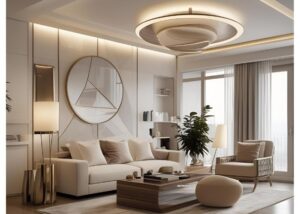
Building designs aren’t just about the walls, roof and plumbing of a building. There are other elements that contribute to how a building feels, functions and performs, and in this article, we’ll be focusing on lighting.
Speaking about lighting, it’s not about picking nice fixtures or making your space look good, it’s an important part of building services design. And when it’s done properly, it can transform your space completely. It doesn’t matter if you’re designing an office, a school, a home or a hospital, how you light up the space is what matters.
So, What Is Lighting Design in Building Services?
To be put simply, lighting design is the planning and implementation of lighting systems in buildings. It involves more than placing light in different areas, it’s more about functionality, efficiency, safety and aesthetics.
Lighting designers consider the use of a room, how much natural light is available and how artificial lighting can support different needs like working, reading or simply creating a beautiful ambience. It also involves how energy is used, its cost and how people feel in a space.
Why Lighting Design Matters
You might not think much about lighting unless it is bad. It’s safe to say that we’ve all experienced fluctuating fluorescent tubes, dim hallways or overly bright light in the office, so we know how bad lighting can make a space uncomfortable.
Here’s what good lighting design does:
- Energy efficiency: LED technology, sensors, and smart controls reduce power use.
- Productivity and comfort: Studies show that proper lighting in workplaces and schools can boost focus and mood.
- Safety: Adequate lighting helps prevent accidents and enhances visibility in major areas.
- Compliance: Buildings must meet lighting standards and regulations.
So, you’ve seen now that lighting isn’t just decoration, it’s a tool for performance that supports how people live, work and use a building.
Key Principles of Smart Lighting Design
A well-designed lighting system considers both natural and artificial light. It strikes a balance between brightness, placement and it’s usefulness in a room or an area.
Some important concepts include:
- Ambient lighting: general lighting that provides overall illumination.
- Task lighting: focused light for specific activities (e.g. reading or cooking).
- Accent lighting: used to highlight features or create mood.
- Lighting control: like dimmers, motion sensors, and timers to manage use.
Modern lighting design often includes automation and smart systems that adjust lighting and make buildings more sustainable and cost-effective.
How Lighting Connects with Other Building Systems
Lighting doesn’t work on its own. It works with:
- Electrical systems
- HVAC (heating, ventilation, and air conditioning)
- Security and fire safety systems
Conclusion
Lighting design is very important in building services. When it’s done the right way, you might not even notice because it just works. But when it’s done poorly, it affects everything from energy bills to people’s performance in the building.
So if you’re building or renovating, prioritize the lighting. Work with experts who understand how building services design work and can install the lighting to comply with building regulations.


